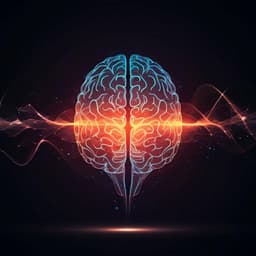
Psychology
An Expert Consensus Statement for Implementing Cognitive Behavioral Therapy for Nightmares in Adults
K. E. Pruiksma, K. E. Miller, et al.
Experts led by Kristi E. Pruiksma, Katherine E. Miller, Joanne L. Davis, Philip Gehrman, Gerlinde Harb, Richard J. Ross, Noelle E. Balliett, Daniel J. Taylor, Michael R. Nadorff, William Brim, Jessee R. Dietch, Hannah Tyler, Sophie Wardle-Pinkston, Rebecca L. Campbell, Joshua Friedlander, and Alan L. Peterson present consensus recommendations to standardize cognitive behavioral therapy for nightmares (CBT-N), detailing treatment components, implementation guidance, and a pathway to a comprehensive manual—tune in to hear how these guidelines aim to clarify practice and advance the field.
~3 min • Beginner • English
Related Publications
Explore these studies to deepen your understanding of the subject.







